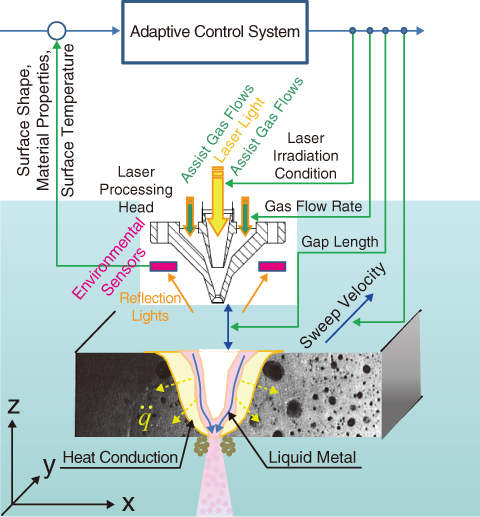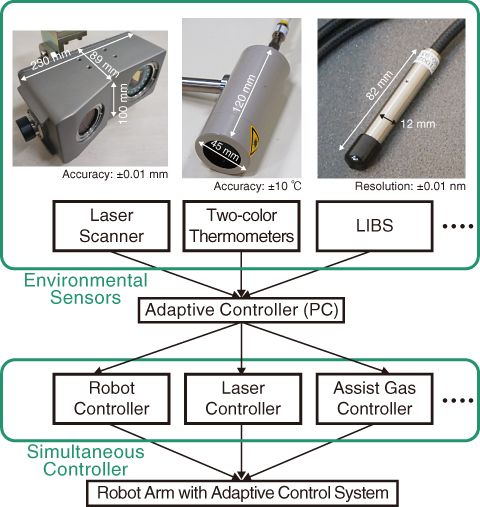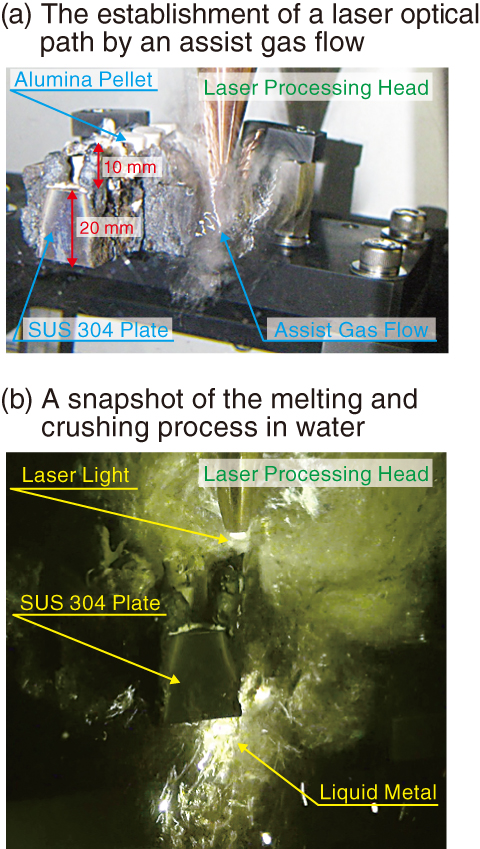
Fig.1-27 An adaptive control system using laser light for melting and crushing fuel debris

Fig.1-28 Block diagram of the adaptive control system

Fig.1-29 A melting and crushing experiment in water
Laser light is characterized by higher power density, local processability, remote controllability, and so forth, and can be used to melt and crush various materials, such as fuel debris, which do not depend upon fracture toughness.
An adaptive control system for yielding suitable laser irradiation conditions, shown in Fig.1-27, is being developed using various environmental sensors, such as a laser scanner to catch indefinite shapes, a LIBS sensor to identify multi-ingredient materials, and a two-color thermometer to monitor melting conditions in laser irradiated positions for the removal of fuel debris and in-vessel structures from the TEPCO’s Fukushima Daiichi NPS (1F).
Fig.1-28 indicates a block diagram of the adaptive control system. The system comprises environmental sensors; a personal computer containing the adaptive control algorithm; and a simultaneous controller for robot motion, laser irradiation, and assist gas flow. While control procedures are employed in the system to obtain suitable laser irradiation conditions, behaviors in the course of the laser melting process are monitored by checking the two-color thermometer signals every time step. Thus, suitable laser irradiation conditions are determined from control rules based on the response surface function.
The adaptive control system was applied to a melting and crushing water experiment using a combined test piece comprising a SUS304 plate (20 mmt) and an alumina pellet (8 mmO.D. × 10 mmh) simulating fuel debris. Fig.1-29 shows experimental photos. A steady-state assist gas flow field of 350 ℓ/min was established as a laser optical path before being used to melt and crush transients (Fig.1-29(a)). In the transient experiments, the SUS304 plate and the alumina pellet of the combined test piece were irradiated by continuous laser light at 6 kW and pulsate laser light over 100 ms, respectively. The sweep velocity of the laser processing head was kept constant at 30 mm/min. As shown in Fig.1-29(b), the combined test piece was melted and crushed well by the use of the adaptive control system.
The results obtained from the water experiment are very encouraging in the sense that the adaptive control system may be used as an efficient tool for removing fuel debris and in-vessel structures from the 1F.